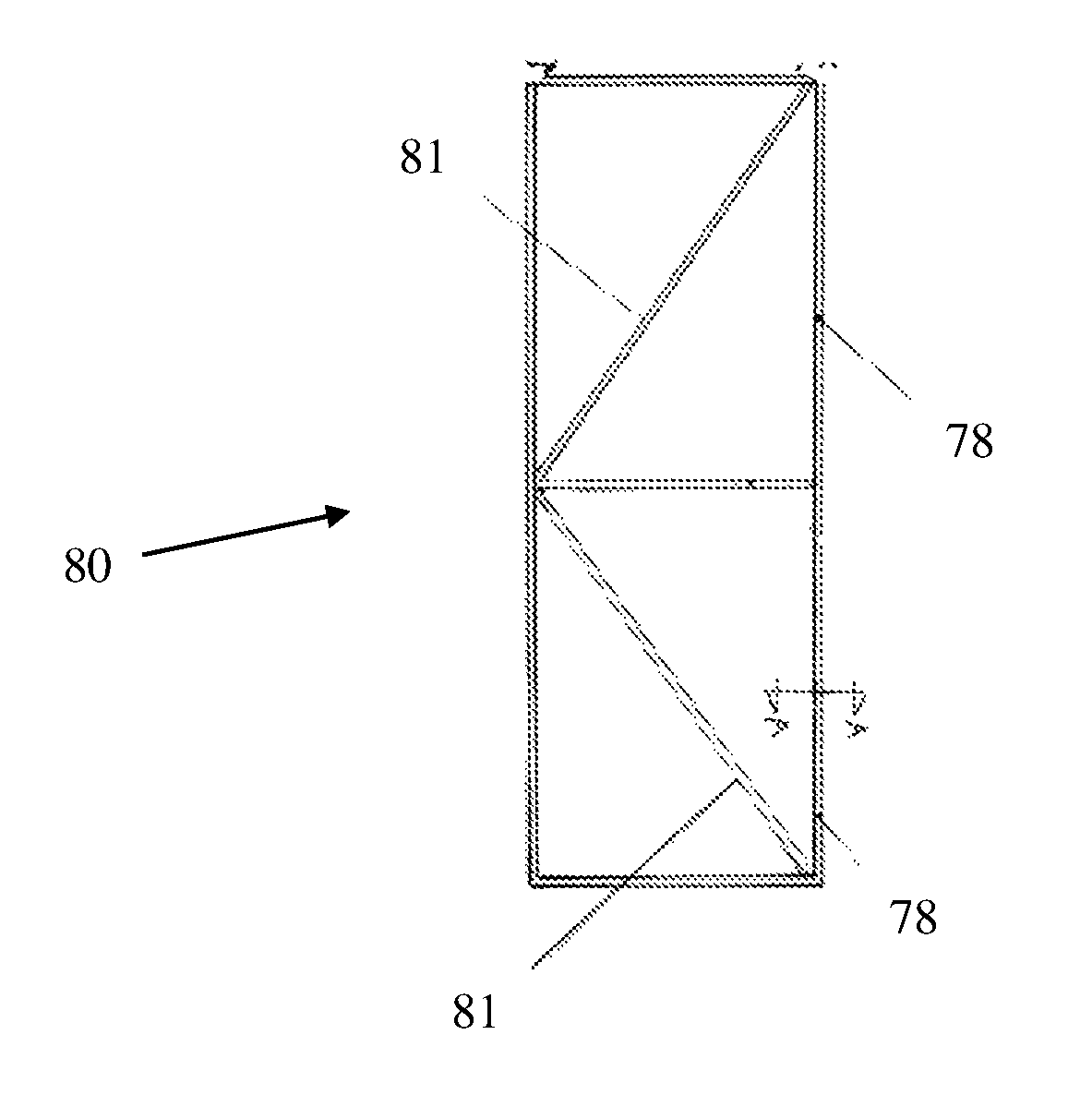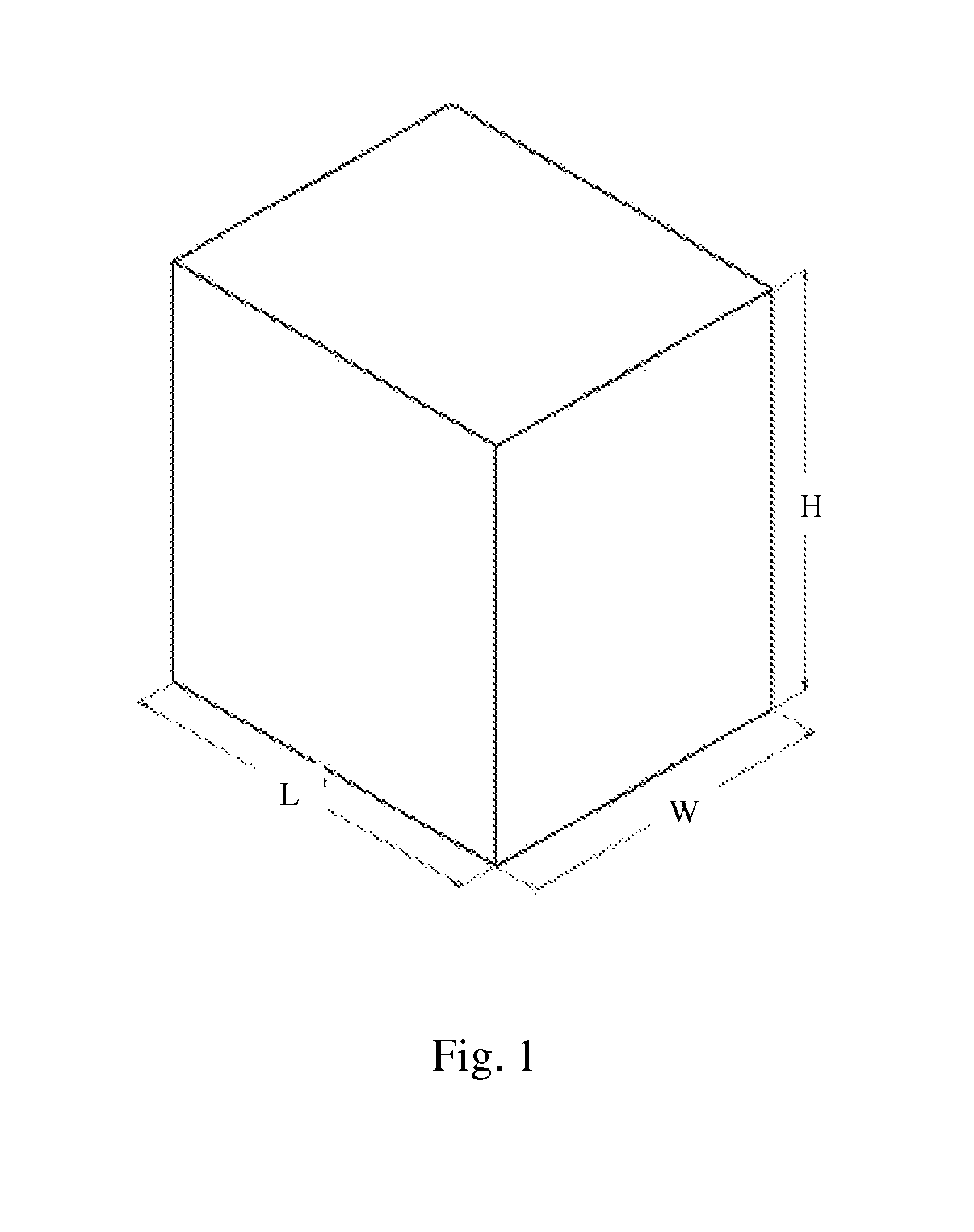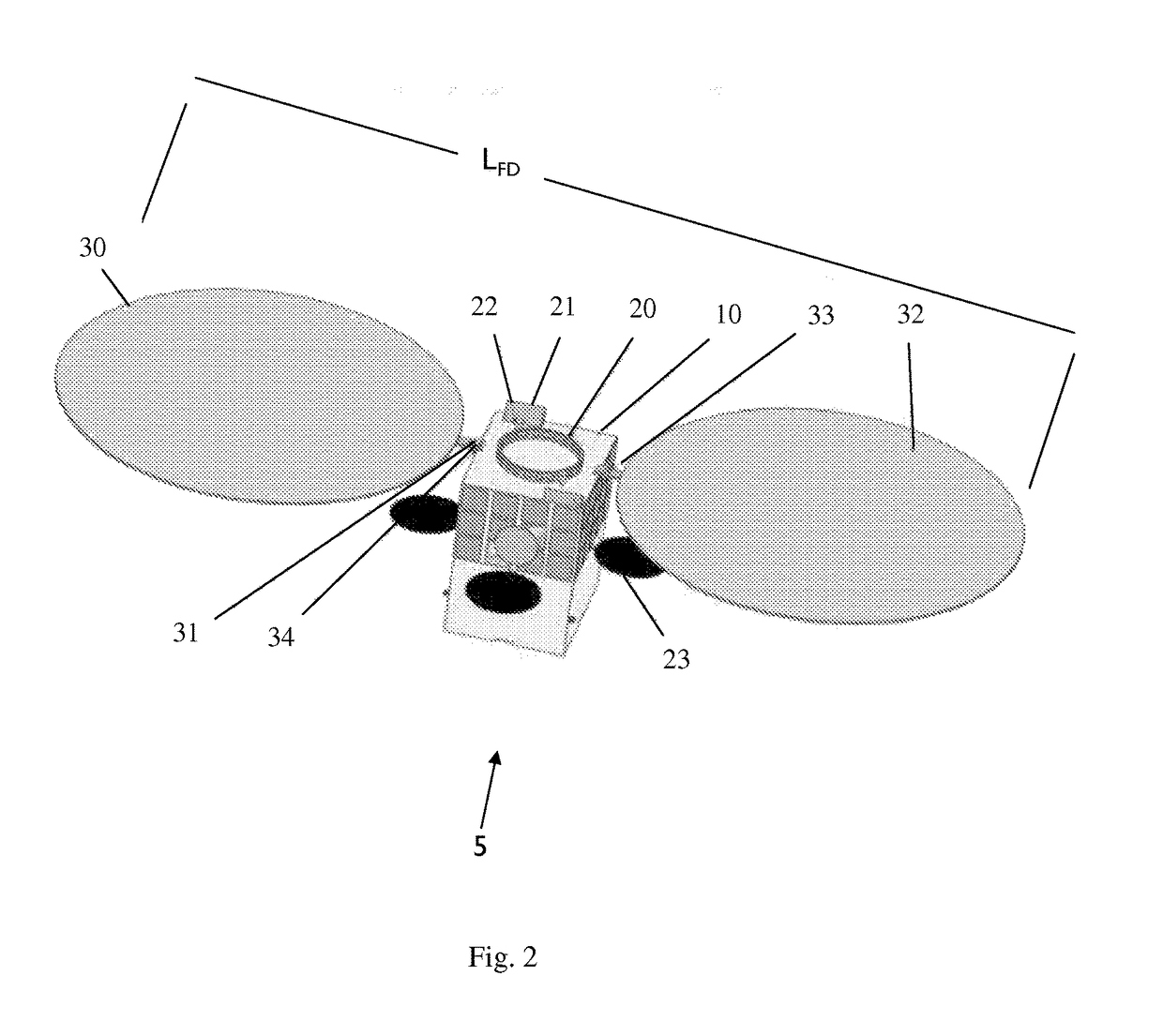Low volume micro satellite with flexible winded panels expandable after launch
a micro satellite and flexible technology, applied in the field of micro satellites, can solve the problems of launch cost and availability, mission non-cost effective, access to space, launch availability and cost, etc., and achieve the effect of improving performan
- Summary
- Abstract
- Description
- Claims
- Application Information
AI Technical Summary
Benefits of technology
Problems solved by technology
Method used
Image
Examples
Embodiment Construction
[0038]According to embodiments of the current invention—the main feature of satellites built and operated according to the invention is the very large deployable flexible solar array which together with other deployable parts and appendages such as deployed antennas and deployed heat radiators enable considerable breakthrough performance for this class of satellites, that is—higher power extracted from the sun light, higher transmission power available, larger antenna areas and larger heat dissipation usable. Reference is made to FIG. 1, which presents dimensions of maximum allowable auxiliary payload volume, the dimensions of which are marked L for length, W for width and H for height.
[0039]Deployment mechanisms according to embodiments of the present invention are disclosed. The deployment mechanisms are adapted to the relative flexibility of the technology of the thin film solar cells that are used according to embodiments of the present invention.
[0040]The first deployment mecha...
PUM
 Login to View More
Login to View More Abstract
Description
Claims
Application Information
 Login to View More
Login to View More - R&D
- Intellectual Property
- Life Sciences
- Materials
- Tech Scout
- Unparalleled Data Quality
- Higher Quality Content
- 60% Fewer Hallucinations
Browse by: Latest US Patents, China's latest patents, Technical Efficacy Thesaurus, Application Domain, Technology Topic, Popular Technical Reports.
© 2025 PatSnap. All rights reserved.Legal|Privacy policy|Modern Slavery Act Transparency Statement|Sitemap|About US| Contact US: help@patsnap.com



